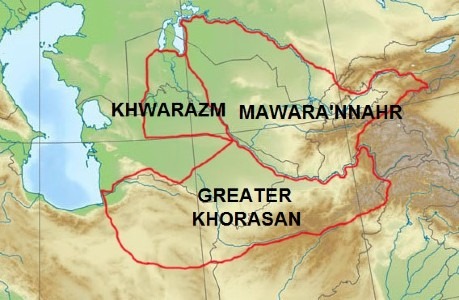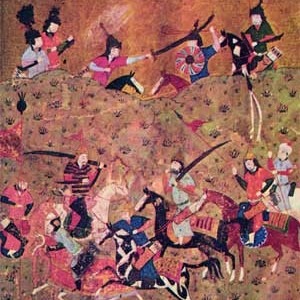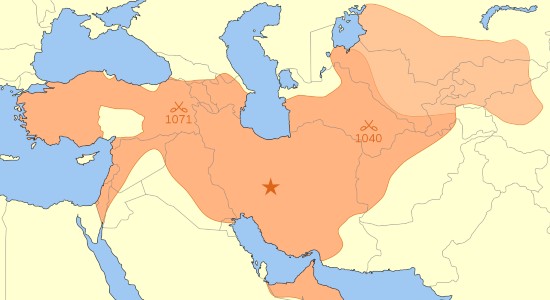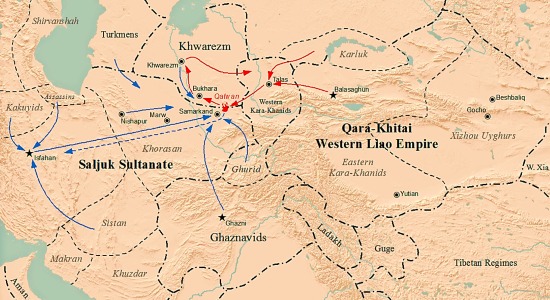MedievalReporter.com
Covering history's most marvelous millennium
Join our newsletter!

Covering history's most marvelous millennium
Covering history's most marvelous millennium
The Seljuqs were Persianized Turks who initially lived in Central Asia. During the 11th century CE, they stormed into the Middle East. They eventually ruled over Persia, Mesopotamia and the Levant. In Anatolia, they conquered large parts of the Byzantine Empire. The Seljuq threat prompted Byzantine pleas for help to Western Europe, which contributed to the call for a Crusade.
Beset on all sides by its enemies, the Great Seljuq Empire collapsed under its own weight in the 12th century. By then, the Seljuqs had revitalized Islamic culture. They altered the political and cultural makeup of lands stretching from Jerusalem in the Holy Land to Tashkent in modern-day Uzbekistan.
This is a short intro from our Medieval Guidebook. Dive deeper into the subject by reading our articles about it.
During the Early Middle Ages, huge swathes of Central Asia were conquered by Islam’s rising empire, the caliphate. The caliph’s control over the region was loose, however. During the 10th century CE, de facto control over the region was hotly contested between many warring factions. In this chaos, a warlord called Seljuq spotted opportunities.

He moved his Turkic tribe, henceforth called the Seljuqs, into Khwarazm – located south of the Aral Sea. There they converted to (Sunni) Islam in 985. The new faith gave Seljuq the authority to participate in the internecine, muslim power struggle over the region. It took a while, but his dynasty finally came out on top. Seljuq’s grandsons conquered the important cities of Merv (in modern Turkmenistan) and Nishapur (in Persia).
In response, the sultan of Persia raised a mighty army including numerous war elephants. He tried to drive the Seljuqs out. The armies met near Merv in 1040, but not before the Seljuqs had cut the Persian army off from all water wells in the region. Persian morale consequently dropped, contributing to a Seljuq victory. In the following years, the Seljuqs completely overran Persia and officially established the “Great Seljuq Empire”.

In 1055, the Seljuqs entered Baghdad. The caliph, by then a plaything of the sultan or emir ruling Mesopotamia, thus came under Seljuq control. Afterward, the Seljuqs increasingly started to look north for expansion. This brought them into conflict with the Byzantine Empire. At the infamous Battle of Manzikert, in 1071, the Seljuqs defeated the Byzantines and subsequently marched into Anatolia.

The Seljuq sultans of the 11th century – and especially their mighty viziers – oversaw a golden age of their empire. One of the largest universities of the Middle Ages was established in Baghdad under their rule. The Great Seljuq Empire by then stretched from the borders of Imperial China to Jerusalem and the outskirts of Constantinople. The caliph awarded the Seljuq ruler the title “Sultan of East and West”. But a threat was growing from within as enemies from without were gathering as well.
A Shia sect called the Hashshashin conducted violent assassinations against the staunchly Sunni Seljuq administration. True to their assassin’s creed, its members even killed the Seljuq vizier. The sultan died barely a month later, plunging the empire into a political crisis that turned into a civil war. Meanwhile, huge hosts of Europeans – the Crusaders – bore down on the region. They found the Seljuqs divided and wrested Jerusalem from them before the turn of the 12th century.
The decline of the Great Seljuq Empire had set in.

– advertisement –
– article continues below –
The Crusader conquest of one of the holiest places of Islam, Jerusalem, was not enough to unite the Seljuqs. Their civil war lasted for 19 more years after that. The sultan that finally emerged victorious was way more concerned with his core territories in Persia and Central Asia than “peripheral” lands such as the Levant or Anatolia. He campaigned extensively in and around his ancestral lands in Khwarazm but was ultimately soundly beaten in 1141. His authority collapsed and local Seljuq commanders became independent in all but name.

One of these commanders in Syria was exceedingly successful in his wars against the Crusaders. He even reconquered Edessa, the first of the Crusader states to fall. His actions prompted the Second Crusade, which ended in failure for the christians. In the end, though, Seljuq holdings in the Levant were gradually consumed. Not by a Crusader counter-attack but by the Kurdish sultan Saladin, who took over the western part of the Seljuq Empire and ultimately reconquered Jerusalem in 1187.
In Anatolia, however, one Seljuq realm remained alive. The so-called Sultanate of Rum officially seceded from the Great Seljuq Empire. Throughout the 12th century, it would remain a thorn in the Byzantines’ side, holding on to most of Anatolia. The Mongols finally subdued the sultan of Rum, turning him into a vassal. This decreased his authority and the sultanate fractured into many (semi-)independent principalities.
One of these dynasties – Osman and his descendants – eventually managed to subjugate the others and founded the Ottoman Empire.

Disclosure: we work hard to provide you with exclusive medieval reports and guides. To make the Middle Ages accessible to everybody, we’d like this information to remain FREE. Therefore, some of the links below are affiliate links, meaning – at no additional cost to you – we will earn a small compensation if you click through.
Grab a short intro on another civilization from our Medieval Guidebook.
Featured Image Credit: Alimohammadi23 (Wikimedia)